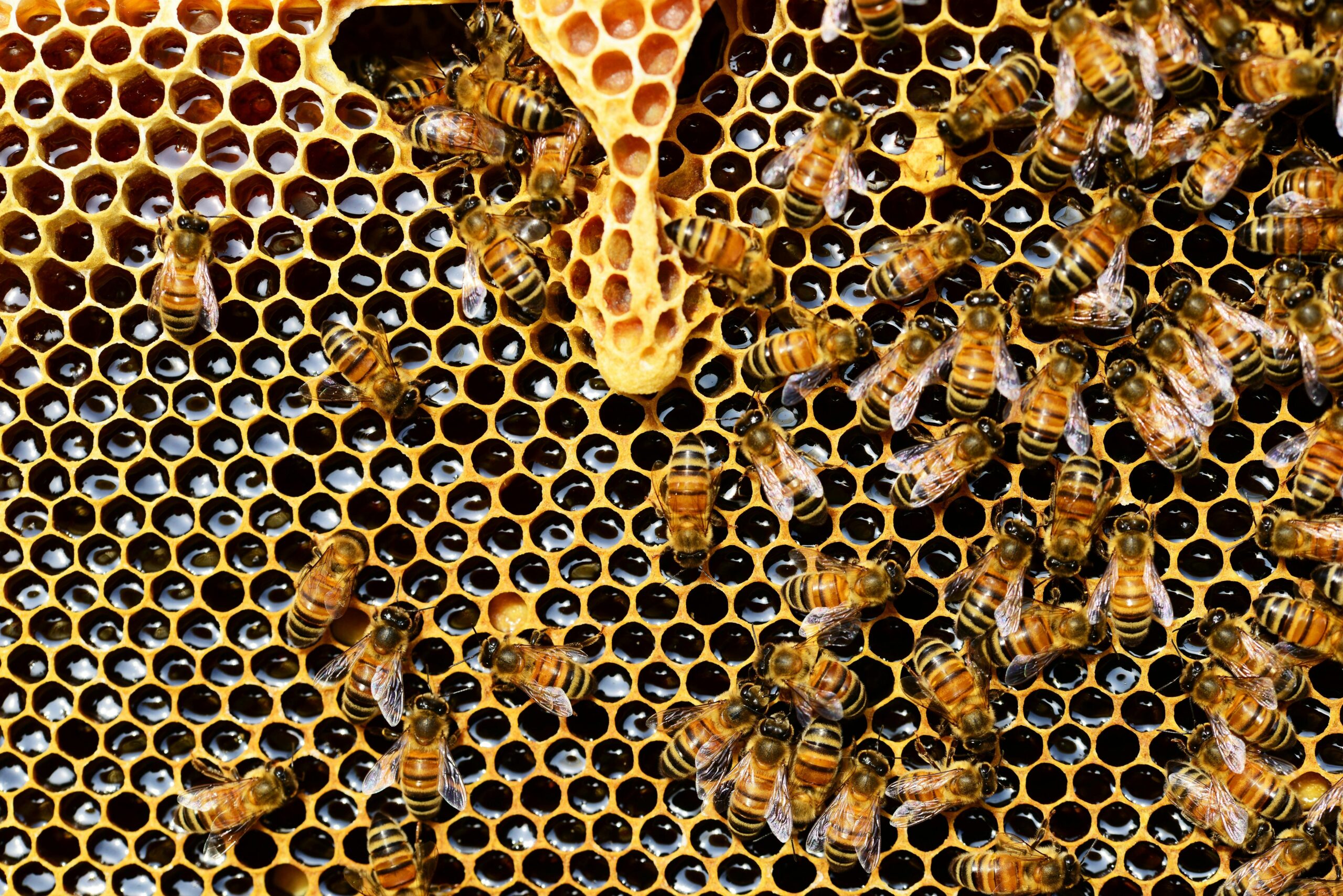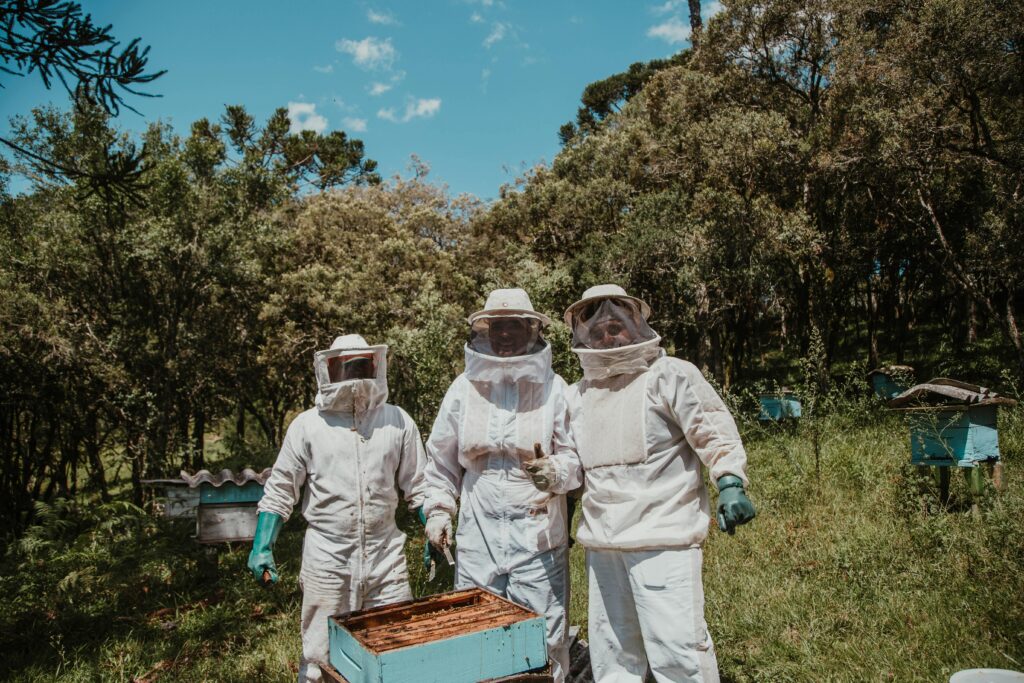Environment
Father and Son Build 50,000 New Beehive Colonies Around the World

In a quiet corner of rural Australia, a father and son have sparked a global movement to help save one of the world’s most vital yet vulnerable creatures—the honeybee. Stuart and Cedar Anderson, fueled by a desire to make beekeeping more accessible and less intrusive, developed an innovative hive that changes how honey is harvested. Known as the Flow Hive, this invention has not only captivated backyard enthusiasts but has also made beekeeping possible for thousands who may never have considered it before.
But the Flow Hive isn’t just about convenience; it’s part of a much larger story. With bee populations struggling worldwide, this unique hive has become a lifeline for pollinators while inspiring countless new beekeepers to join the cause. How did this family project evolve into an environmental movement, and why has it stirred both admiration and controversy?
The Spark Behind Flow Hive
The inception of the Flow Hive traces back to a personal experience that highlighted the challenges of traditional beekeeping. Cedar Anderson, a third-generation beekeeper from Nimbin, Australia, was inspired to design a more user-friendly hive after witnessing his brother endure painful stings during a honey extraction. This incident underscored the need for a method that would allow for honey harvesting without disturbing the bees or exposing beekeepers to harm.
Determined to find a solution, Cedar collaborated with his father, Stuart Anderson, embarking on a decade-long journey of innovation. Their goal was to create a hive that simplified the honey extraction process, making it more accessible and less invasive. This dedication culminated in the development of the Flow Hive, a system that enables honey to flow directly from the hive into a jar, minimizing disruption to the bees.
Reflecting on their motivation, Cedar stated, “We wanted to make it easier for people to harvest honey without the need for expensive equipment or the risk of harming the bees.” This vision not only aimed to revolutionize beekeeping practices but also to encourage more individuals to engage in beekeeping, thereby supporting global bee populations.
What is the Flow Hive?
The Flow Hive is an innovative beekeeping system that simplifies honey harvesting by allowing honey to flow directly from the hive into a jar, minimizing disturbance to the bees. Traditional beekeeping methods often involve labor-intensive processes, including opening the hive, removing frames, and using extractors, which can be disruptive to the colony. In contrast, the Flow Hive utilizes specially designed frames with partially formed honeycomb cells made from food-grade plastic. Bees complete these cells with their own wax, fill them with honey, and cap them as they would in a natural hive. When the frames are full, a lever is inserted and turned, causing the cells to split vertically inside each cell, creating channels for the honey to flow down into a sealed trough and out of the hive directly into a collection vessel. This process allows beekeepers to harvest honey without opening the hive or disturbing the bees, making it a more efficient and bee-friendly method of honey extraction.
Cedar Anderson, co-inventor of the Flow Hive, explained, “We wanted to make it easier for people to harvest honey without the need for expensive equipment or the risk of harming the bees.” This design not only streamlines the harvesting process but also promotes a more sustainable approach to beekeeping by reducing stress on bee colonies.
The Flow Hive has garnered attention for its user-friendly design and potential to attract new beekeepers. However, it has also sparked discussions within the beekeeping community regarding its impact on traditional practices and bee health. Some experts emphasize the importance of regular hive inspections and caution that the ease of honey extraction should not lead to neglect of essential beekeeping responsibilities.
A Crowdfunding Success Story
In February 2015, Stuart and Cedar Anderson introduced the Flow Hive to the world through a crowdfunding campaign on Indiegogo, aiming to raise $70,000 to commence production. Remarkably, they achieved this target within just five minutes of launching the campaign. Within 15 minutes, contributions had surged to approximately $250,000. By the campaign’s conclusion, they had amassed an astounding $12.2 million, making it the most successful Indiegogo campaign at that time.
The overwhelming response to the Flow Hive campaign highlighted a significant public interest in innovative, bee-friendly beekeeping solutions. The Andersons’ invention resonated with both seasoned beekeepers and novices eager to engage in sustainable practices. This unprecedented support enabled them to assist thousands of individuals in becoming beekeepers for the first time, thereby contributing to the global effort to support bee populations.
Reflecting on the campaign’s success, Cedar Anderson noted, “That’s when we knew that the world wanted our invention.” The Flow Hive’s crowdfunding triumph not only provided the necessary funds for production but also fostered a global community of beekeepers dedicated to innovative and sustainable beekeeping practices.
Global Impact of the Flow Hive
Since its introduction, the Flow Hive has significantly influenced beekeeping practices worldwide, leading to the establishment of over 50,000 new beehive colonies across more than 130 countries. This widespread adoption has not only increased honey production but also played a crucial role in supporting global bee populations, which are essential pollinators for many crops.
The Flow Hive’s user-friendly design has attracted a diverse group of individuals to beekeeping, including those who may have previously been deterred by the complexities of traditional methods. Approximately half of the Flow Hives sold by 2018 were purchased by new beekeepers, indicating a significant expansion in the beekeeping community. This surge in interest has fostered a greater appreciation for bees and their vital role in ecosystems, encouraging more people to engage in conservation efforts.
Moreover, the Flow Hive has inspired a global movement toward sustainable and ethical beekeeping practices. By simplifying the honey extraction process and minimizing disturbance to bees, it promotes a more harmonious relationship between humans and these essential pollinators. This shift has the potential to enhance the health and resilience of bee populations worldwide, contributing to the stability of ecosystems and the security of food supplies.
Supporting Bee Populations and the Environment
The decline in global bee populations has raised significant concerns due to their crucial role in pollinating crops and maintaining biodiversity. Factors such as habitat loss, pesticide use, and climate change have contributed to this decline, threatening food security and ecosystem health.
Recognizing the urgency of this issue, Stuart and Cedar Anderson have committed to supporting bee populations and environmental conservation through their company, BeeInventive. They have donated 100% of profits from the sale of their Flow Pollinator House to various grassroots pollinator projects in Australia and the United States. These initiatives focus on protecting wild habitats and creating pollinator-friendly environments, essential for the survival and health of bee populations.
Cedar Anderson emphasized the importance of these efforts, stating, “Pollinators need large areas of habitat to flourish—the more we can do to protect and conserve native habitats, the more opportunities these tiny environmental champions will have to do their important work.”
In addition to financial contributions, the Andersons have actively promoted awareness about the challenges facing bees and the environment. By engaging with the global community of beekeepers and environmentalists, they have fostered a network dedicated to sustainable practices and the protection of pollinators. This collective effort is vital in addressing the complex factors contributing to bee decline and ensuring the health of ecosystems worldwide.
Controversy and Challenges
The Flow Hive has faced criticism and sparked debate within the beekeeping community. Some traditional beekeepers argue that the Flow Hive oversimplifies the complexities of beekeeping, potentially attracting individuals who may not fully understand the responsibilities involved. John Chesnut, a botanist and beekeeper in California, expressed skepticism, stating, “Keeping homicidal, venomous insects quickly loses its charm unless you’re deeply committed, and the Marie Antoinette-style make-believe farmers are just going to disappear in a season or two.”
Additionally, concerns have been raised about the potential for urban environments to become oversaturated with beehives, leading to competition for limited nectar sources. As the number of urban beekeepers increases, the availability of pollinator-friendly flowers may not keep pace, potentially impacting bee health and honey production. Some experts suggest that focusing on planting more flowers and creating bee-friendly habitats could be more beneficial than simply increasing the number of hives.
Furthermore, the ease of honey extraction with the Flow Hive might lead some users to neglect essential hive management practices, such as regular inspections for diseases and pests. Kim Flottum, editor of Bee Culture, emphasized, “Simply having bees isn’t saving the bees.” Proper hive management is crucial to ensure the health and sustainability of bee colonies, regardless of the hive design.
In response to these concerns, the creators of the Flow Hive have emphasized the importance of education and responsible beekeeping. They provide resources and support to help new beekeepers understand the complexities of hive management and the ecological significance of bees. By fostering a community of informed and committed beekeepers, they aim to address the challenges and controversies associated with their invention.
The Future of Backyard Beekeeping
The introduction of the Flow Hive has significantly transformed backyard beekeeping, making it more accessible and appealing to a broader audience. By simplifying the honey extraction process, the Flow Hive has encouraged many individuals and families to engage in beekeeping, fostering a deeper connection with nature and a greater appreciation for the vital role bees play in our ecosystems.
Cedar Anderson, co-inventor of the Flow Hive, highlighted the educational benefits of beekeeping, stating, “Lots of people come to us and say things like, ‘We needed an excuse to get the kids off the iPad—they’re down there harvesting honey, and they’re learning about the world we all depend on.'” This hands-on experience not only provides valuable lessons about biology and ecology but also instills a sense of responsibility towards environmental stewardship.

Small Hives, Big Impact
The Flow Hive has made waves far beyond the backyard, reshaping how we view and interact with bees and bringing new hope to global pollinator populations. By introducing a simpler and more humane method of honey extraction, Stuart and Cedar Anderson have ignited a worldwide movement, inspiring thousands of people to take up beekeeping and actively contribute to environmental preservation.
This invention has sparked discussions, inspired budding beekeepers, and fostered a deeper appreciation for our vital pollinators. Despite some criticisms and challenges, the Flow Hive’s legacy lies in its potential to create lasting change. With each new hive set up and every drop of honey harvested, the Andersons’ invention encourages us to care more about the natural world and reminds us that even small steps can make a difference. Whether you’re already a beekeeper or simply curious about supporting bees, there are countless ways to get involved and play a role in protecting these essential creatures for generations to come.
Typos, corrections and/or news tips? Email us at Contact@TheMindUnleashed.com
